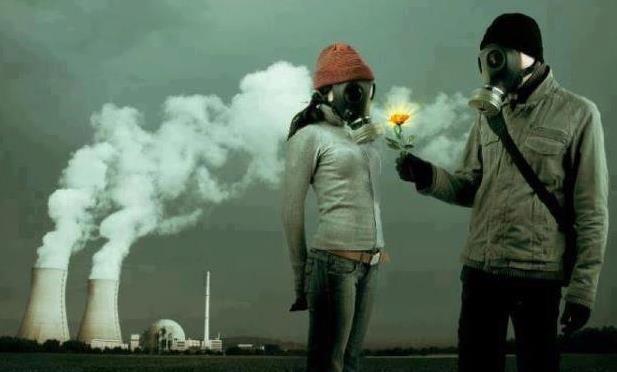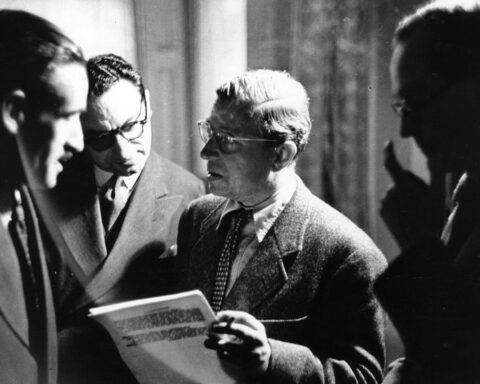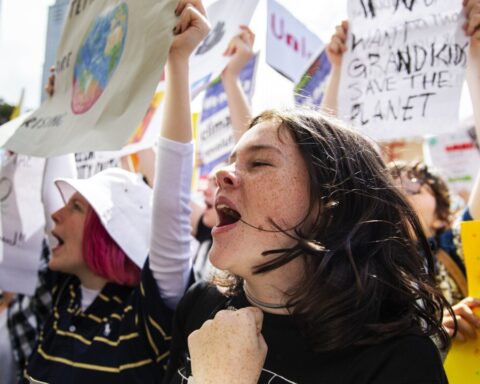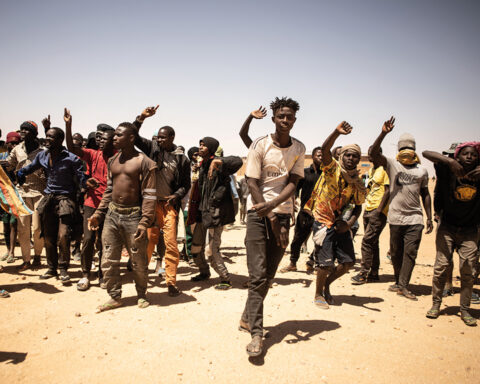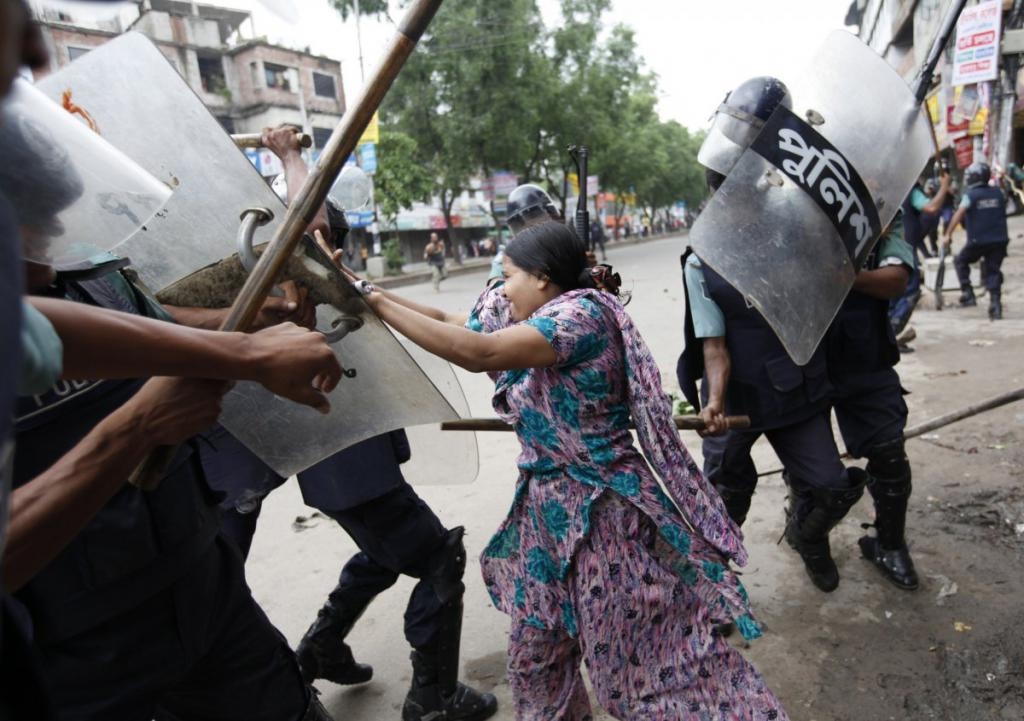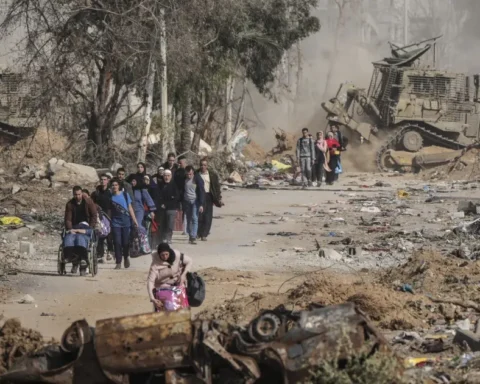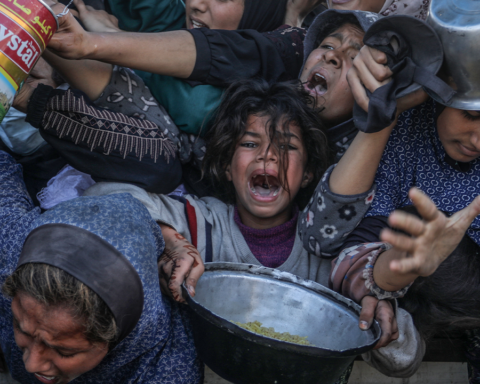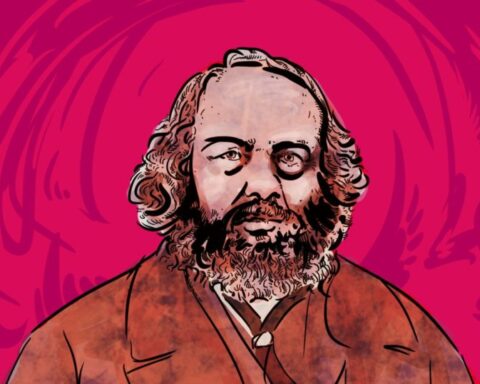We seem to have reached an impasse. Capitalism as we know it appears to be coming apart. But as financial institutions stagger and crumble, there is no obvious alternative. Organized resistance appears scattered and incoherent; the global justice movement a shadow of its former self. There is good reason to believe that, in a generation or so, capitalism will no longer exist: for the simple reason that it’s impossible to maintain an engine of perpetual growth forever on a finite planet. Faced with the prospect, the knee-jerk reaction — even of “progressives” — is, often, fear, to cling to capitalism because they simply can’t imagine an alternative that wouldn’t be even worse.
The first question we should be asking is: How did this happen? Is it normal for human beings to be unable to imagine what a better world would even be like?
Hopelessness isn’t natural. It needs to be produced. If we really want to understand this situation, we have to begin by understanding that the last thirty years have seen the construction of a vast bureaucratic apparatus for the creation and maintenance of hopelessness, a kind of giant machine that is designed, first and foremost, to destroy any sense of possible alternative futures. At root is a veritable obsession on the part of the rulers of the world with ensuring that social movements cannot be seen to grow, to flourish, to propose alternatives; that those who challenge existing power arrangements can never, under any circumstances, be perceived to win. To do so requires creating a vast apparatus of armies, prisons, police, various forms of private security firms and police and military intelligence apparatus, propaganda engines of every conceivable variety, most of which do not attack alternatives directly so much as they create a pervasive climate of fear, jingoistic conformity, and simple despair that renders any thought of changing the world seem an idle fantasy. Maintaining this apparatus seems even more important, to exponents of the “free market,” even than maintaining any sort of viable market economy. How else can one explain, for instance, what happened in the former Soviet Union, where one would have imagined the end of the Cold War would have led to the dismantling of the army and KGB and rebuilding the factories, but in fact what happened was precisely the other way around? This is just one extreme example of what has been happening everywhere. Economically, this apparatus is pure dead weight; all the guns, surveillance cameras, and propaganda engines are extraordinarily expensive and really produce nothing, and as a result, it’s dragging the entire capitalist system down with it, and possibly, the earth itself.
The spirals of financialization and endless string of economic bubbles we’ve been experience are a direct result of this apparatus. It’s no coincidence that the United States has become both the world’s major military (”security”) power and the major promoter of bogus securities. This apparatus exists to shred and pulverize the human imagination, to destroy any possibility of envisioning alternative futures. As a result, the only thing left to imagine is more and more money, and debt spirals entirely out of control. What is debt, after all, but imaginary money whose value can only be realized in the future: future profits, the proceeds of the exploitation of workers not yet born. Finance capital in turn is the buying and selling of these imaginary future profits; and once one assumes that capitalism itself will be around for all eternity, the only kind of economic democracy left to imagine is one everyone is equally free to invest in the market — to grab their own piece in the game of buying and selling imaginary future profits, even if these profits are to be extracted from themselves. Freedom has become the right to share in the proceeds of one’s own permanent enslavement.
And since the bubble had built on the destruction of futures, once it collapsed there appeared to be — at least for the moment — simply nothing left.
The effect however is clearly temporary. If the story of the global justice movement tells us anything it’s that the moment there appears to be any sense of an opening, the imagination will immediately spring forth. This is what effectively happened in the late ‘90s when it looked, for a moment, like we might be moving toward a world at peace. In the US, for the last fifty years, whenever there seems to be any possibility of peace breaking out, the same thing happens: the emergence of a radical social movement dedicated to principles of direct action and participatory democracy, aiming to revolutionize the very meaning of political life. In the late ‘50s it was the civil rights movement; in the late ‘70s, the anti-nuclear movement. This time it happened on a planetary scale, and challenged capitalism head-on. These movements tend to be extraordinarily effective. Certainly the global justice movement was. Few realize that one of the main reasons it seemed to flicker in and out of existence so rapidly was that it achieved its principle goals so quickly. None of us dreamed, when we were organizing the protests in Seattle in 1999 or at the IMF meetings in DC in 2000, that within a mere three or four years, the WTO process would have collapsed, that “free trade” ideologies would be considered almost entirely discredited, that every new trade pact they threw at us — from the MIA to Free Trade Areas of the Americas act — would have been defeated, the World Bank hobbled, the power of the IMF over most of the world’s population, effectively destroyed. But this is precisely what happened. The fate of the IMF is particularly startling. Once the terror of the Global South, it is, by now, a shattered remnant of its former self, reviled and discredited, reduced to selling off its gold reserves and desperately searching for a new global mission.
Meanwhile, most of the “third world debt” has simply vanished. All of this was a direct result of a movement that managed to mobilize global resistance so effectively that the reigning institutions were first discredited, and ultimately, that those running governments in Asia and especially Latin America were forced by their own populations to call the bluff of the international financial system. Much of the reason the movement was thrown into confusion was because none of us had really considered we might win.
But of course there’s another reason. Nothing terrifies the rulers of the world, and particularly of the United States, as much as the danger of grassroots democracy. Whenever a genuinely democratic movement begins to emerge — particularly, one based on principles of civil disobedience and direct action — the reaction is the same; the government makes immediate concessions (fine, you can have voting rights; no nukes), then starts ratcheting up military tensions abroad. The movement is then forced to transform itself into an anti-war movement; which, pretty much invariably, is far less democratically organized. So the civil rights movement was followed by Vietnam, the anti-nuclear movement by proxy wars in El Salvador and Nicaragua, the global justice movement, by the “War on Terror.”
But at this point, we can see that “war” for what it was: as the flailing and obviously doomed effort of a declining power to make its peculiar combination of bureaucratic war machines and speculative financial capitalism into a permanent global condition. If the rotten architecture collapsed abruptly at the end of 2008, it was at least in part because so much of the work had already been accomplished by a movement that had, in the face of the surge of repression after 911, combined with confusion over how to follow up its startling initial success, had seemed to have largely disappeared from the scene.
Of course it hasn’t really.
We are clearly at the verge of another mass resurgence of the popular imagination. It shouldn’t be that difficult. Most of the elements are already there. The problem is that, our perceptions having been twisted into knots by decades of relentless propaganda, we are no longer able to see them. Consider here the term “communism.” Rarely has a term come to be so utterly reviled. The standard line, which we accept more or less unthinkingly, is that communism means state control of the economy, and this is an impossible utopian dream because history has shown it simply “doesn’t work.” Capitalism, however unpleasant, is thus the only remaining option. But in fact communism really just means any situation where people act according to the principle of “from each according to their abilities, to each according to their needs” — which is the way pretty much everyone always act if they are working together to get something done. If two people are fixing a pipe and one says “hand me the wrench,” the other doesn’t say, “and what do I get for it?”(That is, if they actually want it to be fixed.) This is true even if they happen to be employed by Bechtel or Citigroup. They apply principles of communism because it’s the only thing that really works. This is also the reason whole cities or countries revert to some form of rough-and-ready communism in the wake of natural disasters, or economic collapse (one might say, in those circumstances, markets and hierarchical chains of command are luxuries they can’t afford.) The more creativity is required, the more people have to improvise at a given task, the more egalitarian the resulting form of communism is likely to be: that’s why even Republican computer engineers, when trying to innovate new software ideas, tend to form small democratic collectives. It’s only when work becomes standardized and boring — as on production lines — that it becomes possible to impose more authoritarian, even fascistic forms of communism. But the fact is that even private companies are, internally, organized communistically.
Communism then is already here. The question is how to further democratize it. Capitalism, in turn, is just one possible way of managing communism — and, it has become increasingly clear, rather a disastrous one. Clearly we need to be thinking about a better one: preferably, one that does not quite so systematically set us all at each others’ throats.
All this makes it much easier to understand why capitalists are willing to pour such extraordinary resources into the machinery of hopelessness. Capitalism is not just a poor system for managing communism: it has a notorious tendency to periodically come spinning apart. Each time it does, those who profit from it have to convince everyone — and most of all the technical people, the doctors and teachers and surveyors and insurance claims adjustors — that there is really no choice but to dutifully paste it all back together again, in something like the original form. This despite the fact that most of those who will end up doing the work of rebuilding the system don’t even like it very much, and all have at least the vague suspicion, rooted in their own innumerable experiences of everyday communism, that it really ought to be possible to create a system at least a little less stupid and unfair.
This is why, as the Great Depression showed, the existence of any plausible-seeming alternative — even one so dubious as the Soviet Union in the 1930s — can turn a downswing into an apparently insoluble political crisis.
Those wishing to subvert the system have learned by now, from bitter experience, that we cannot place our faith in states. The last decade has instead seen the development of thousands of forms of mutual aid association, most of which have not even made it onto the radar of the global media. They range from tiny cooperatives and associations to vast anti-capitalist experiments, archipelagos of occupied factories in Paraguay or Argentina or of self-organized tea plantations and fisheries in India, autonomous institutes in Korea, whole insurgent communities in Chiapas or Bolivia, associations of landless peasants, urban squatters, neighborhood alliances, that spring up pretty much anywhere that where state power and global capital seem to temporarily looking the other way. They might have almost no ideological unity and many are not even aware of the other’s existence, but all are marked by a common desire to break with the logic of capital. And in many places, they are beginning to combine. “Economies of solidarity” exist on every continent, in at least eighty different countries. We are at the point where we can begin to perceive the outlines of how these can knit together on a global level, creating new forms of planetary commons to create a genuine insurgent civilization.
Visible alternatives shatter the sense of inevitability, that the system must, necessarily, be patched together in the same form — this is why it became such an imperative of global governance to stamp them out, or, when that’s not possible, to ensure that no one knows about them. To become aware of it allows us to see everything we are already doing in a new light. To realize we’re all already communists when working on a common projects, all already anarchists when we solve problems without recourse to lawyers or police, all revolutionaries when we make something genuinely new.
One might object: a revolution cannot confine itself to this. That’s true. In this respect, the great strategic debates are really just beginning. I’ll offer one suggestion though. For at least five thousand years, popular movements have tended to center on struggles over debt — this was true long before capitalism even existed. There is a reason for this. Debt is the most efficient means ever created to take relations that are fundamentally based on violence and violent inequality and to make them seem right and moral to everyone concerned. When the trick no longer works, everything explodes. As it is now. Clearly, debt has shown itself to be the point of greatest weakness of the system, the point where it spirals out of anyone’s control. It also allows endless opportunities for organizing. Some speak of a debtor’s strike, or debtor’s cartel.
Perhaps so — but at the very least we can start with a pledge against evictions: to pledge, neighborhood by neighborhood, to support each other if any of us are to be driven from our homes. The power is not just that to challenge regimes of debt is to challenge the very fiber of capitalism — its moral foundation — now revealed to be a collection of broken promises — but in doing so, to create a new one. A debt after all is only that: a promise, and the present world abounds with promises that have not been kept. One might speak here of the promise made us by the state; that if we abandon any right to collectively manage our own affairs, we would at least be provided with basic life security. Or of the promise offered by capitalism — that we could live like kings if we were willing to buy stock in our own collective subordination. All of this has come crashing down. What remains is what we are able to promise one another. Directly. Without the mediation of economic and political bureaucracies. The revolution begins by asking: what sort of promises do free men and women make to one another, and how, by making them, do we begin to make another world?
_____________________________
This also appeared in “Adbusters”, #82, volume 17, number 2. March/April 2009. Under the title of “Tactical Briefing”
